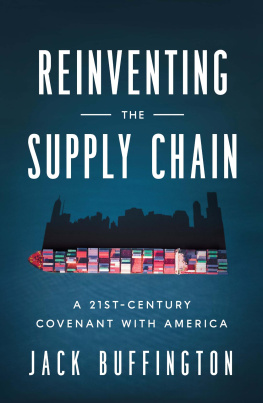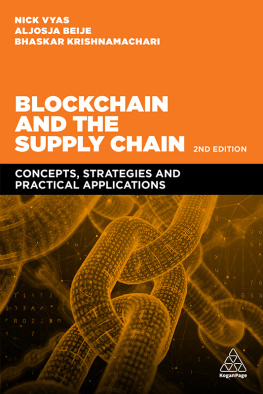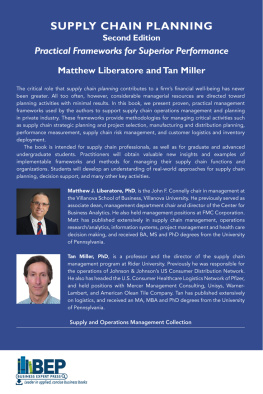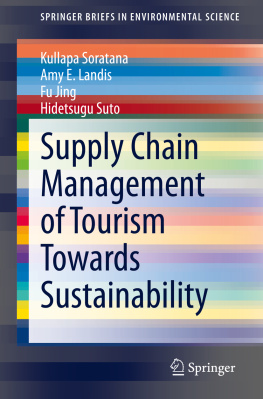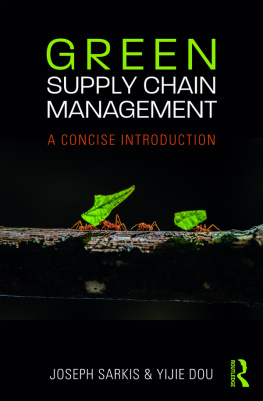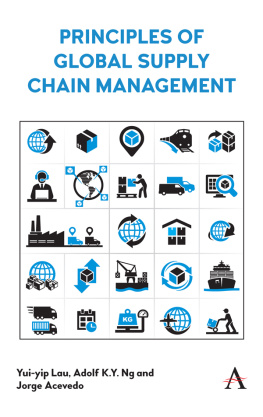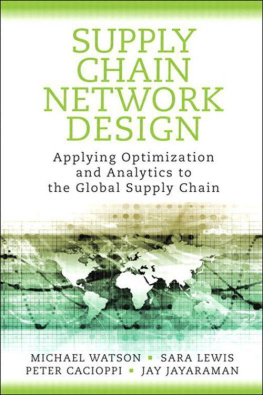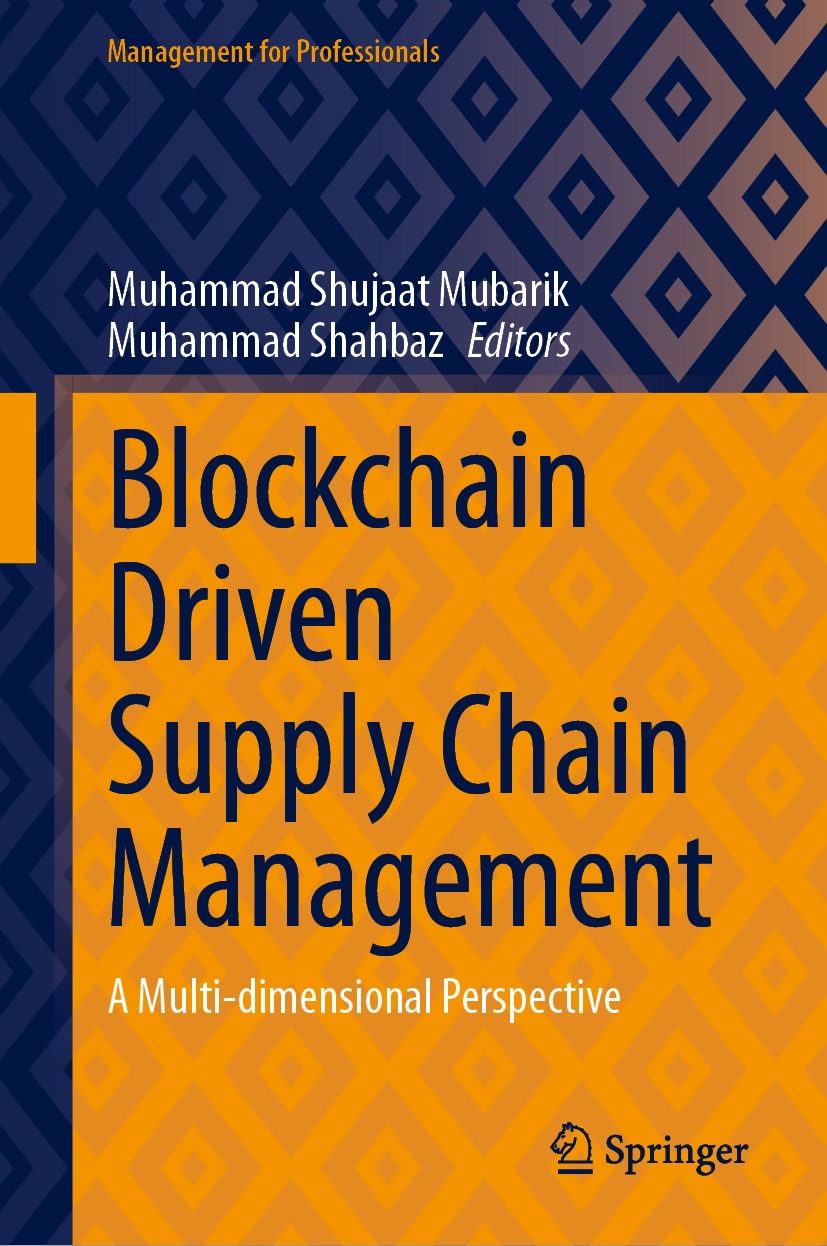Management for Professionals
The Springer series Management for Professionals comprises high-level business and management books for executives, MBA students, and practice-oriented business researchers. The topics span all themes of relevance for businesses and the business ecosystem. The authors are experienced business professionals and renowned professors who combine scientific backgrounds, best practices, and entrepreneurial vision to provide powerful insights into how to achieve business excellence.
Editors
Muhammad Shujaat Mubarik and Muhammad Shahbaz
Blockchain Driven Supply Chain Management
A Multi-dimensional Perspective

The Springer logo.
Editors
Muhammad Shujaat Mubarik
College of Business Management, Institute of Business Management, Karachi, Pakistan
Muhammad Shahbaz
School of Management and Economics, Beijing Institute of Technology, Beijing, China
ISSN 2192-8096 e-ISSN 2192-810X
Management for Professionals
ISBN 978-981-99-0698-7 e-ISBN 978-981-99-0699-4
https://doi.org/10.1007/978-981-99-0699-4
The Editor(s) (if applicable) and The Author(s), under exclusive license to Springer Nature Singapore Pte Ltd. 2023
This work is subject to copyright. All rights are solely and exclusively licensed by the Publisher, whether the whole or part of the material is concerned, specifically the rights of translation, reprinting, reuse of illustrations, recitation, broadcasting, reproduction on microfilms or in any other physical way, and transmission or information storage and retrieval, electronic adaptation, computer software, or by similar or dissimilar methodology now known or hereafter developed.
The use of general descriptive names, registered names, trademarks, service marks, etc. in this publication does not imply, even in the absence of a specific statement, that such names are exempt from the relevant protective laws and regulations and therefore free for general use.
The publisher, the authors, and the editors are safe to assume that the advice and information in this book are believed to be true and accurate at the date of publication. Neither the publisher nor the authors or the editors give a warranty, expressed or implied, with respect to the material contained herein or for any errors or omissions that may have been made. The publisher remains neutral with regard to jurisdictional claims in published maps and institutional affiliations.
This Springer imprint is published by the registered company Springer Nature Singapore Pte Ltd.
The registered company address is: 152 Beach Road, #21-01/04 Gateway East, Singapore 189721, Singapore
To Hadi, Hashim, and Emaan, my ultimate source of inspiration and love (Muhammad Shujaat Mubarik)
To my mother, father, and my teacher Professor Sabihuddin Butt (Muhammad Shahbaz)
Preface
Long before the COVID-19 pandemic, incidents like the e-coli breakout, the horse meat scandal, and the Rana plaza disasters raised questions about supply chain traceability, sustainability, visibility, and resilience worldwide. The COVID-led supply chain disruptions proved that those concerns were right and essential to address. We could see that during COVID-19, most firms struggled hard to keep the chains afloat. Interestingly, in the early phase of the pandemic, several companies, especially those with first- and second-tier suppliers outside China, did not devote any importance to those disruptions. The overarching argument of such firms was that the pandemic would not affect them as their immediate suppliers or even the second-tier suppliers were not from China. However, during July-August 2020, almost every firm was fighting with the pandemic-led disruptions, and those who did not warrant any importance in the early days were in hot water. The response of such firms was highly unorganized, disconcerted, and devoid of any strategic depth.
Once the impacts of COVID started abating, practitioners, managers, policy matters, and firms across the globe began exploring what went wrong in dealing with the COVID and what could have been capitalized on to develop a more resilient, prepared, and responsive supply chain. The issues of trust, traceability, visibility, and integration of the supply chain also came under the limelight. During such debates, discussions, and scholarly work, blockchain, which was already catching momentum before the COVID-19 era, went under the spotlight. Many firms started considering blockchain-driven supply chain management as a strategic tool to recover from supply chain disruptions and improve the visibility, traceability, and trust in the supply chain. Both practitioners and researchers started arguing that blockchain technology, with its unique capabilities, has the potential to mitigate supply chain inefficiencies by increasing visibility, traceability, compliance, and verification to manage better and control the supply chain network. This is why a great deal of literature, consulting reports, and policy work could be seen during 2021 and 2022, focusing on the capitalization of blockchain as end-to-end supply chain technology.
This book advances the work on blockchain-driven supply chain management by providing its multidimensional perspective. The book explores the applicability and impacts of blockchain on various performance parameters, including sustainable performance. We are confident that the book will help readers from multiple fields understand the multi-pronged role of blockchain technology in businesses.
At the end, we must thank all of our contributing authors and anonymous reviewers for contributing to this book.
Muhammad Shujaat Mubarik
Muhammad Shahbaz
Karachi, Pakistan Beijing, China
Acknowledgment
We sincerely acknowledge the support of Institute of Business Management (IoBM), Karachi for supporting us to undertake the challenging task of editing this book. Likewise, our sincere acknowledgment to Higher Education Commission (HEC), Pakistan for supporting us under NRPU-20-11226.
Introduction
This book takes a diverse perspective on the blockchain-driven supply chain and attempts to delineate its various facets. The book primarily focuses on 12 significant aspects of blockchain-driven supply chain. Chapter focuses on understanding the relevance of the antecedents of supply chain collaboration in the era of BCT and highlights the opportunities and challenges for BCT implementation in SC networks. It reviews some of the critical antecedents of SCC considering the BCT implementation and explains how SC partners may leverage these technologies to enhance the networks collaborative advantage. It contributes to the domain of SCC by extending the perception of underlying constructs of SCC when viewed in conjunction with the BCSCM and motivating the researchers to reconsider the idea of SCC to benefit the SC partners in the network.
Chapter , with a special focus on the role of a firms intellectual capital in capitalizing BCSCM for Supply Chain Resilience. This chapter can help reader understand the role of the human in the supply chain.
One of the long-standing issues firms are dealing with is inventory visibility and management. Despite significant development in supply chain management technologies, many aspects of inventory management are yet to be resolved. In this regard, Chap. of this book explains the instrumentality of blockchain technology in managing the supply chain. A brief discussion on the role of blockchain in inventory management has been given in the chapter, followed by recent developments in the field.


